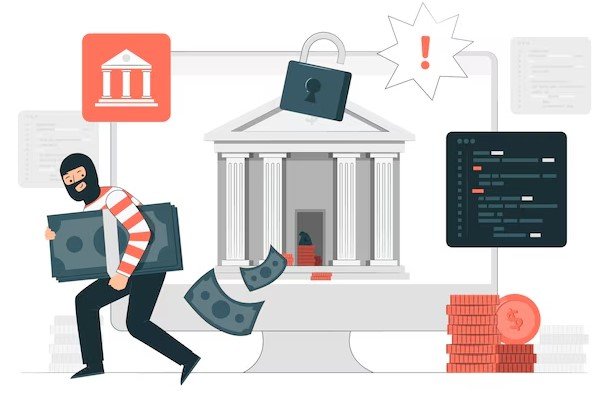US banks are grappling with a sharp rise in fraud, where scams now make up more than a quarter of total losses. New data from 2024 shows these deceptive tactics cost financial institutions billions, doubling their share from the year before and eroding customer trust.
Rising Tide of Financial Fraud
Banks across the United States reported staggering fraud losses in 2024, with scams leading the charge. Experts point to sophisticated criminal methods that mimic everyday marketing strategies, targeting people based on age, income, and habits. This shift has pushed scam-related losses to 27 percent of all bank fraud, up from just 12 percent in 2023. The total fraud hit reached over 12.5 billion dollars, marking a 25 percent jump from the previous year.
This surge comes as no surprise to industry watchers. Criminals are getting smarter, using data to personalize attacks. For instance, younger people often fall for job scams on social media, while older adults get tricked by fake calls or emails pretending to be from trusted sources. Banks are now racing to update their defenses, but the damage is already widespread.
One key factor is the boom in digital payments. With more transactions happening online, fraudsters find it easier to slip in. Reports indicate that investment scams alone caused 5.7 billion dollars in losses, a 24 percent increase. These numbers highlight how scams are not just random; they are tailored to exploit specific vulnerabilities.
How Scammers Target Different Groups
Fraudsters adapt their approaches to match victims’ daily lives. Research shows clear patterns based on age and income levels. Younger generations, like those in their twenties, are hit hard by employment scams. Almost 8 percent of scam victims in this group lost money to fake job offers, three times more than older people.

On the other hand, seniors over 60 faced a record 700 million dollars in losses. They are often targeted with fake e-commerce deals or sweepstakes that promise big wins but deliver nothing. High-income families deal with investment fraud, lured by promises of quick returns. Lower-income groups see more scams related to government benefits or debt collection.
- Gen Z: 21 percent of scams start on social media, focusing on quick-money schemes.
- Baby Boomers: 23 percent via email and 21 percent by phone, imitating official contacts.
- Seniors: Over three times more likely to fall for online shopping fraud than younger adults.
These tactics build on trust in familiar channels. For example, e-commerce scams often begin on shopping sites, while debt scams use phone calls to seem legitimate.
Key Statistics and Trends from 2024
The numbers paint a grim picture of fraud’s impact on US banks and consumers. Total reported losses from internet crimes climbed to 16.6 billion dollars, a 33 percent rise. Identity theft and scams combined cost Americans around 47 billion dollars, affecting millions.
| Category | 2024 Losses (Billions) | Percentage Increase from 2023 |
|---|---|---|
| Total Fraud | 12.5 | 25% |
| Investment Scams | 5.7 | 24% |
| Internet Crimes | 16.6 | 33% |
| Scams on Banks | Share: 27% | Doubled from 12% |
This table shows the main areas of growth. Banks note that scams now outpace other fraud types, like unauthorized transactions. Trends point to artificial intelligence playing a bigger role, with criminals using AI to create convincing fake messages or voices. This tech twist makes detection harder and losses higher.
Another trend is the rise in authorized push payment scams, where victims are tricked into sending money themselves. These accounted for a big chunk of the 12.5 billion dollars in consumer-reported losses. Banks are seeing more cases tied to social media and online marketplaces, where fraudsters pose as sellers or buyers.
Challenges for Banks and Prevention Steps
Banks face tough challenges in fighting this wave. Traditional security like passwords or alerts is not enough against personalized scams. Many institutions are turning to advanced tools, such as real-time behavior tracking. This helps spot unusual actions, like a sudden large transfer to a new account.
Education is also key. Banks urge customers to verify requests before acting. Simple steps, like calling back on a known number or checking official websites, can stop many scams. Yet, with fraudsters segmenting targets so effectively, one-size-fits-all advice falls short.
Regulators are stepping in too. The Federal Trade Commission and other agencies pushed for better reporting and faster refunds in 2024. Still, victims often lose money permanently, especially in push payment cases. Banks lost trust as a result, with some customers switching to alternatives like fintech apps.
Looking ahead, experts predict losses could climb to over 100 billion dollars by 2029 if trends continue. The key is dynamic defenses that evolve with criminal tactics.
Impact on Consumers and the Economy
The human cost is huge. About 77 million Americans, or three in ten, lost money to scams in the last five years. This leads to stress, financial ruin, and eroded confidence in banking. Older adults, hit hardest, sometimes lose life savings to imposter scams pretending to be from banks or government.
On a broader scale, these losses slow economic growth. Banks spend billions on security, passing costs to customers through fees. Digital commerce suffers as people hesitate to shop online. Recent events, like major data breaches in 2024, only fuel the problem by giving fraudsters more personal info to use.
Consumers can protect themselves by staying vigilant. Watch for urgent demands for money or info, and report suspicious activity right away. Banks offer free tools like fraud alerts to help.
Share your thoughts on this rising scam threat in the comments below, and spread the word to help others stay safe.








